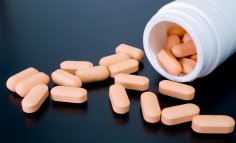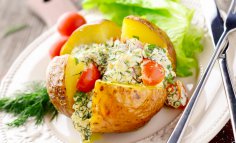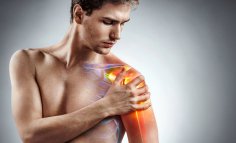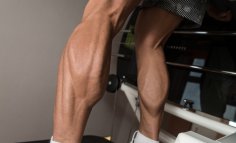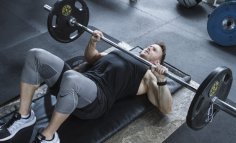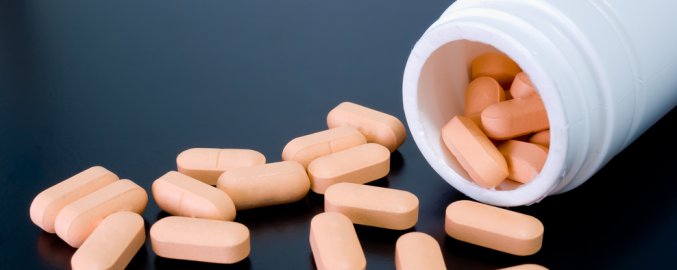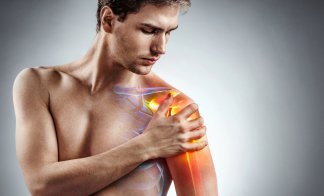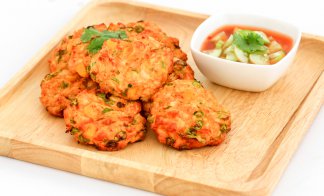interessant.. hvor har du tatt det fra? Nå må jeg nesten begynne å lese mer for å undersøke dette!
Jeg fant det på articlesofhealth bloggen : her er noe annet intressant å lese, sjekk ut :
The following scientific discourse are twenty-five important points to understand concerning the creation of hydrochloric acid (HCL) and sodium bicarbonate in the stomach lining, the ingestion of protein and sugar and how acid/alkaline biochemistry, physiology, and anatomy relate to health, sickness, and disease.
Unfortunately, Dr. Royal Rife, a contemporary medical doctor and scientist, and many other savants did not and do not understand how acid/base are created in the body and the onset of latent tissue acidosis.
How is acid/base created in the body?
1) The parietal or cover cells of the stomach split the sodium chloride of the blood. The sodium is used to bind with water and carbon dioxide to form the alkaline salt, sodium bicarbonate or NaHCO3. The biochemistry is: H20 + CO2 + NaCl = NaHCO3 + HCL.
2) For each molecule of sodium bicarbonate (NaHCO3) made, a molecule of hydrochloric acid (HCL) is made and secreted into the digestive system - specifically, the stomach (the gastric pits in the stomach) - to be eliminated.
3) The chloride ion from the sodium chloride (salt) binds to an acid or proton forming HCL as a waste product of sodium bicarbonate production.
4) When large amounts of acids, including HCL, enter the stomach from a rich protein meal, acid is withdrawn from the acid-base household. The organism would die if the resulting alkalosis - or NaHCO3 (base flood) or base surplus - created by the stomach was not taken up by the alkalophile glands that need these quick bases in order to build up their strong sodium bicarbonate secretions. These glands and organs are the stomach, pancreas, Brunner's glands (between the pylorus and the junctions of the bile and pancreatic ducts), Lieberkuhn's glands in the liver and its bile with its strong acid binding capabilities which it has to produce.
5) When a rich protein and carbohydrate meal is ingested, the stomach begins to manufacture and secrete sodium bicarbonate (NHCO3) to alkalize the acids from the food ingested. This causes a loss in the alkaline reserves and an increase in acid and/or HCL found in the gastric pits of the stomach. These acids and/or HCL are taken up by the blood which lowers blood plasma pH. The blood eliminates this increase in gastrointestinal acid by throwing it off into the Pishinger's spaces.
6) The space enclosed by these finer and finer fibers is called the Pishinger's space, or the extracellular space that contains the fluids that bath and feed each and every cell while carrying away the waste from those same cells. There is no mention of this organ in American physiology text books. There is mention of the extracellular space but not of any organ that stores acids from metabolism and diet, like the kidney. I call this organ the "pre-kidney."
7) After a rich protein or sugary meal, the urine pH becomes alkaline. Protein and sugar nourishment then react in acidic fashion in the organism by the production of sulfuric, phosporhoric, nitric, uric, lactic, and acetylaldehyde acids, respectively, but also through the formation and excretion of base in the urine. This is a double loss of bases.
8) During heavy exercise, if the the resulting lactic acid was not adsorbed by the collagen fibers, the specific acid catchers of the body, the organism would die. The total collection of these fibers is the largest organ of the body called SCHADE, the colloidal connective tissue organ. NO liquid exchange occurs between the blood and the parenchyma cells, or in reverse, unless it passes through this connective tissue organ. This organ connects and holds everything in our bodies in place. This organ is composed of ligaments, tendons, sinew, and the finer fibers that become the scaffolding that holds every single cell in our bodies in place. When acids are stored in this organ, which includes the muscles, inflammation and pain develop.
That is why I have stated, "acid is pain and pain is acid." You cannot have one without the other. This is the beginning of latent tissue acidosis.
9) The more acidity, the more that acids are adsorbed into the the collagen fibers to be neutralized and the less sodium bicarbonate or NaHCO3 that is taken up by the alkalophile glands. The larger the potential difference between the adsorbed acids and the amount of NaHCO3 generated with each meal, the more or less alkaline are the alkalophile glands like the pancreas, gallbladder, pylorus glands, blood, etc. The acid binding power of the connective tissue, the blood, and the alkalophile glands depends on its alkali reserve, which can be determined through blood, urine, and saliva pH, including live and dried blood analysis as taught by Dr. Robert O. Young.
10) The iso-structure of the blood maintains the pH of the blood by pushing off the acids into the connective tissue. The blood gives to the urine the same amount of acid that it receives from the tissues and liver so it can retain its iso-form. A base deficiency is always related to the deterioration of the deposit ability of the connective tissues. As long as the iso-structure of the blood is maintained, the urine - which originates from the blood - remains a faithful reflected image of the acid-base regulation, not of the blood, but of the tissues. The urine therefore is an excretion product of the tissues, not the blood. So when you are testing the pH of the urine, you are testing the pH of the tissues.
11) A latent "acidosis" is the condition that exists when there are not enough bases in the alkalophile glands because they have been used up in the process of neutralizing the acids adsorbed to the collagen fibers. This leads to compensated "acidosis." This means the blood pH has not changed but other body systems have changed. This can then lead to decompensated "acidosis" where the alkaline reserves of the blood are used up and the pH of the blood is altered. Decompensated "acidosis" can be determined by testing the blood pH, urine pH and the saliva pH. The decrease in the alkaline reserves in the body occurs because of hyper-proteinization, (eating steak!)or too much protein, and hyper-carbonization, or too much sugar. This is why 80 to 90 year old folks are all shrunk up and look like prunes. They have very little or no alkaline reserves in their alkalophile glands. When all the alkaline minerals are gone, so are you and your battery runs down. The charge of your cellular battery can be measured testing the ORP or the oxidative reduction potential of the blood using an ORP meter. As you become more acidic this energy potential or ORP decreases.
12) If there is not enough base left over after a protein or surgary meal, or enough base to neutralize and clear the acids stored in the connective tissues, a relative base deficiency develops which leads to latent tissue acidosis. When this happens the liver and pancreas are deficient of adequate alkaline juices to ensure proper alkalization of the food in your stomach and small intestine.
13) Digestion or alkalization cannot proceed without enough of these alkaline juices for the liver and pancreas, etc., and so the stomach has to produce more acid in order to make enough base, ad nauseam, and one can develop indigestion, nausea, acid reflux, GERD, ulcers, esophageal cancer and stomach cancer. All of these symptoms are not the result of too much acid. On the contrary, it is the result of too little base!
14) The stomach is NOT an organ of digestion as currently taught in ALL biology and medical texts, BUT an organ of contribution or deposit. It's function is to deposit alkaline juices to the stomach to alkalize the food and to the blood to carry to the alklophile glands!!!!
15) There is a daily rhythm to this acid base ebb and flow of the fluids of the body. The stored acids are mobilized from the connective tissues and Pishinger's spaces while we sleep.
These acids reach their maximum (base tide) concentration in this fluid, and thereby the urine (around 2 a.m. is the most acidic). The acid content of the urine directly reflects the acid content of the fluid in the Pishinger's spaces, the extracellular fluid compartments of the body. On the other hand, the Pishinger's spaces become most alkaline around 2 p.m. (the base flood) as then the most sodium bicarbonate (NaHCO3) is being generated by the cover cells of the stomach to alkalize the food and drink we have ingested.
16) If your urine is not alkaline by 2 p.m. you are definitely in an ACIDIC condition and lacking in alkaline reserves. The pH of the urine should run between 6.8 and 8.4.
17) After a high protein meal, the free acids formed such as sulfuric, phosphoric, uric, and nitric acids stick to the collagen fibers to remove them from the blood and protect the delicate pH of 7.365. The H+ or proton ions from these acids are neutralized by the next base flood, the sodium bicarbonate produced after the meal. The H+ or proton ion combines with the carbonate or HCO3, converts to carbonic acid, H2CO3, which converts to CO2 and H2O. The sulfuric and other acids from proteins are neutralized as follows where the HR represents any acid with the R as its acid radical (SO4, PO4, or NO3) HR + NaHCO3 <=> H2O + NaR (Ca, Mg, K)+ CO2.
18) Medical doctors and savants do not recognize latent tissue acidosis. They recognize compensated acidosis and decompensated acidosis. In compensated acidosis, breathing increases in order to blow off more carbonic acid which decreases PCO2 because of the lowered carbonate or HCO3. When the breathing rate can no longer get any faster and when the kidneys can no longer increase its' function to keep up with the acid load, then the blood pH starts to change from a pH of 7.365 to 7.3 then to 7.2. At a blood pH of 6.95 the heart relaxes and the client goes into a coma or dies.
19) Metabolism of a normal adult diet results in the generation of 50 to 100 meq of H+ or proton per day, which must be excreted if the urine acid-base balance is to be maintained. A meq is a milliequivalent which is an expression of concentration of substance per liter of solution, calculated by dividing the concentration in milligrams per 100 milliliters by the molecular weight. This process involves two basis steps; 1) the reabsorption of the filtered sodium bicarbonate or NaHCO3 and, 2) excretion of the 50 to 100 meq of H+ or proton produced each day by the formation of titratable acidity and NH4+ or ammonium. Both steps involve H+ or proton secretion from the cells of the kidney into the urine.
20) Sodium bicarbonate (NaHCO3) must be reabsorbed into the blood stream, since the loss of NaHCO3 will increase the net acid load and lower the plasma NaHCO3 concentration. The loss of NaHCO3 in the urine is equivalent to the addition of H+ to the body since both are derived from the dissociation of H2CO3 or carbonic acid.
21) The biochemistry is: CO2 + H2O = H2CO3 = HCO3 + H+. The normal subject must reabsorb 4300 meq of NaHCO3 each day! The secreted H+ or proton ions are generated within the kidney cells from the dissociation of H2O or water. This process also results in the equimolar production OH- or hydroxyl ions. The OH- ions bind to the active zinc-containing site of the intracellular carbonic anhydrase; they then combine with CO2 to form HCO3- ions which are released back into the kidney cells and returned to the systemic circulation. Second, the dietary acid load is excreted by the secretion of H+ or proton ions from the kidney cells into the urine. These H+ or proton ions can do one of two things: the H+ or proton ions can be combined with the urinary buffers, particularly HPO4, in a process called titratable acidity (The biochemistry is: H+ + HPO4 = H2PO4), or the phosphate buffering system or the H+ or proton ions can combine with ammonia (NH3) to form ammonium as follows:
NH3 + H+ = NH4.
22) This ammonia is trapped and concentrated in the kidney as ammonium which is then excreted in the urine.
23) In response to acid load, 36% of the H+ or proton goes intracellular in exchange for the release of Na+ (sodium) into the blood stream. 15% of the acid goes intracellular in exchange for K+ (potassium) - common in diabetics. 6% of the H+ or proton or acid goes directly into the cell to be buffered by intracellular processes. 43% is buffered extracellularly as NaHCO3- or sodium bicarbonate combining with H+ or proton to form H2CO3 or carbonic acid which breaks down to CO2 or carbon dioxide to be released by the lungs. 10% of CO2 or carbon dioxide is excreted through the lungs and 90% is used by the body to reabsorb alkaline minerals and make sodium bicarbonate.
The biochemistry is: CO2 + H2O = H2CO3 = HCO3 + H+.
24) Of all the ways the body can buffer metabolic and dietary acids, the excretion of protein (the eating of steak) generated acid residues is the only process that does not add sodium bicarbonate back into blood circulation. This creates a loss of bases which is the forerunner of all sickness and disease. In the long run, the only way to replace these lost bases is by eating more alkaline electron-rich green foods and long-chain polyunsaturated fats. A cucumber a day keeps the doctor away - an apple creates more acid, leading to latent tissue acidosis.
25) The Human Body is an acid producing organism by function. Yet, it is an alkaline organism by design. Eating animal protein and sugar are deadly acidic choices - unless you want to be increasingly sick, tired and fat over time.
Please remember this very important truth, hydrochloric acid is not the cause of digestion but the result of digestion. Start alkalizing today and begin improving the quality and quantity of your life

